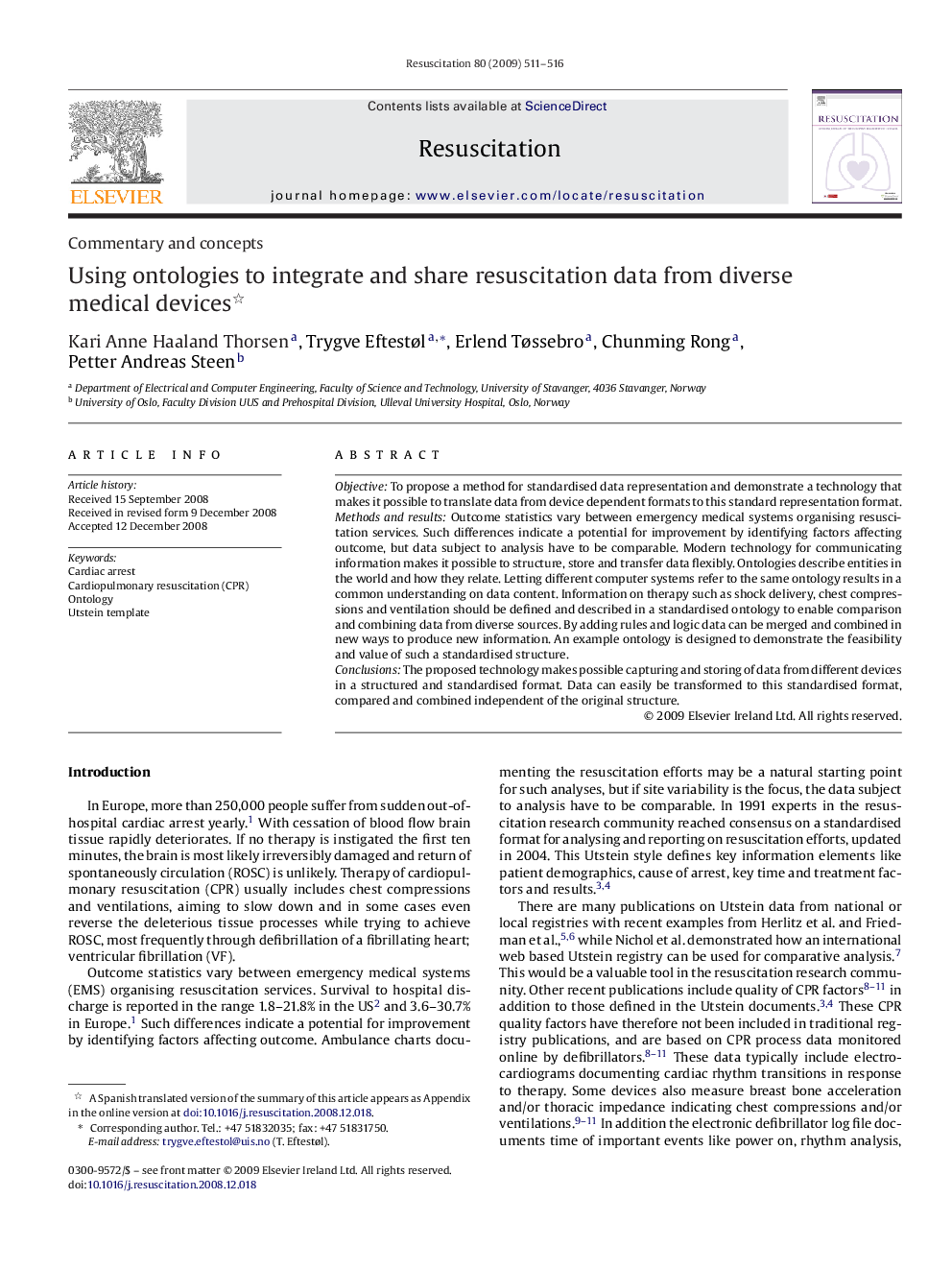| Article ID | Journal | Published Year | Pages | File Type |
|---|---|---|---|---|
| 3011177 | Resuscitation | 2009 | 6 Pages |
ObjectiveTo propose a method for standardised data representation and demonstrate a technology that makes it possible to translate data from device dependent formats to this standard representation format.Methods and resultsOutcome statistics vary between emergency medical systems organising resuscitation services. Such differences indicate a potential for improvement by identifying factors affecting outcome, but data subject to analysis have to be comparable. Modern technology for communicating information makes it possible to structure, store and transfer data flexibly. Ontologies describe entities in the world and how they relate. Letting different computer systems refer to the same ontology results in a common understanding on data content. Information on therapy such as shock delivery, chest compressions and ventilation should be defined and described in a standardised ontology to enable comparison and combining data from diverse sources. By adding rules and logic data can be merged and combined in new ways to produce new information. An example ontology is designed to demonstrate the feasibility and value of such a standardised structure.ConclusionsThe proposed technology makes possible capturing and storing of data from different devices in a structured and standardised format. Data can easily be transformed to this standardised format, compared and combined independent of the original structure.
